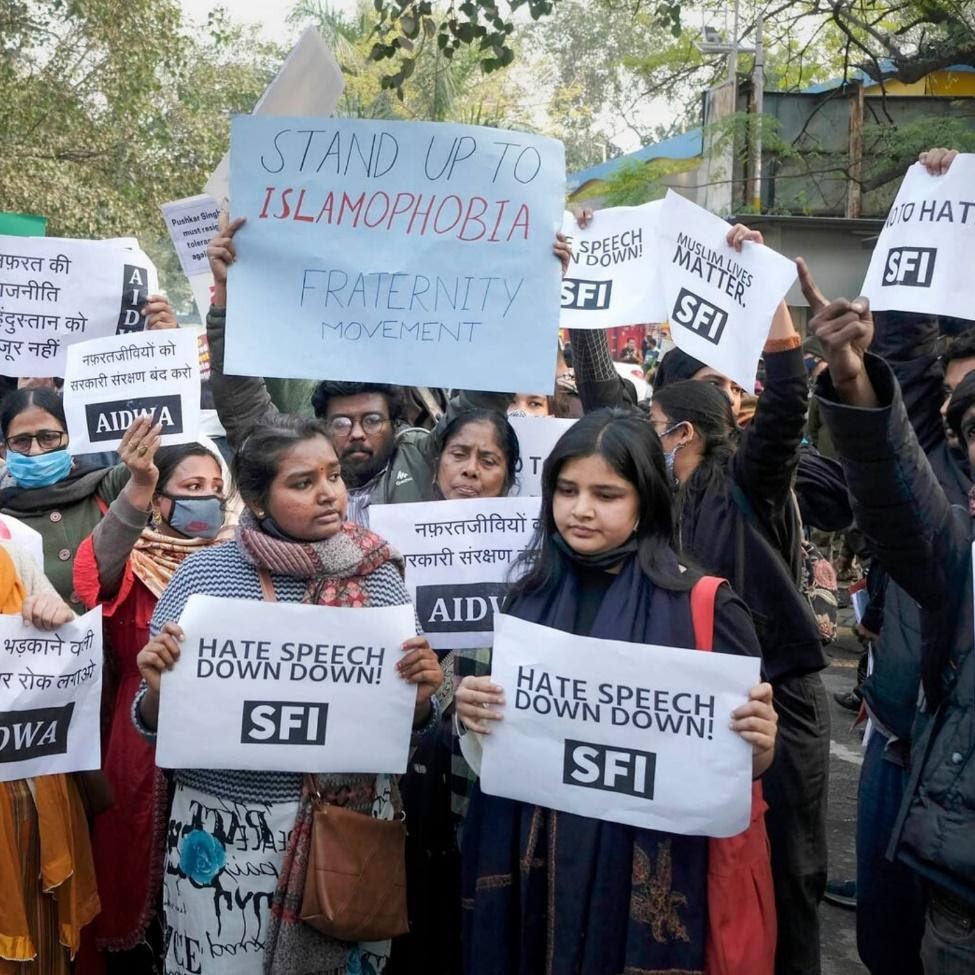Description

Figure 1: No Copyright Infringement Intended
Context:
- Recent incident in the Haridwar has prompted demand to take action against the Hate speech.
About Hate Speech:
- Hate speech is an incitement to hatred against a particular group of persons marginalized by their religious belief, sexual orientation, gender, and so on.
- The Law Commission, in its 267th report on hate speech, said such utterances have the potential to provoke individuals and society to commit acts of terrorism, genocide, and ethnic cleansing.
Indian Constitution and hate speech
- Freedom of Speech and Expression: Under Article 19(1) (a) all citizens have the right to freedom of speech and expression.
- Article 19(2): Reasonable restriction has been provided to maintain the public order and freedom of speech.
Impact of Hate Speech:
- Internal Security: fake video in 2013 incited communal passions in the Muzzafarnagar. Hate speech combined with fake news on minorities has induced an anti-immigration sentiment in the west. (eg : France, Italy, Greece)
- Discrimination: Hate speech are used to reinforce to existing stereotypes leading to discrimination against the groups in day to day lifes.
- Violence: Hate speech is used to create an atmosphere of violence and chaos .The Christchurch Terror attack on a mosque by an extremist was a result of Islamophobia (a direct result of hate speech).
- Misinformation and disinformation has led to Delhi riots in 2020 resulted due to hate speech.
- Igniting extremist sentiments: hate speech brings together the people of extremist ideology to seek an excuse for revenge like Nazis in Germany, terrorists in Kashmir.
Causes of Hate Speech:
- Sense of superiority: Hate speech is directly a result of feeling of superiority of oneself over other where they can say whatever they want.
- Stubborn behaviour towards a particular ideology: In the hate speech, people undertakes stubborn behaviour towards a particular ideology where they do not want to engage in reasons.
- Negative stereotypes: Hate speech create negative stereotypes against a community leading to the systems of oppression – discriminatory structures, etc.
- Threats: realistic threats – such as perceived competition over jobs, housing and other resources, and physical harm to themselves or others – and ‘symbolic threats’ which are concerned with the threat posed to people’s values and social norms.

Legal protection against Hate Speech:
- According to Section 153A of IPC, “promotion of enmity between different groups on grounds of religion, race, place of birth, residence, language, etc., and doing acts prejudicial to maintenance of harmony”, is a punishable offence and attracts three years of imprisonment.
- Under Section 505(2), “it is an offence to make statements creating or promoting enmity, hatred or ill-will between classes.
- Under Section 505(3), the offence will attract up to a five-year jail term if it takes place in a place of worship, or in any assembly engaged in religious worship or religious ceremonies.
- Section 295 of the Indian Penal Code 1860, which criminalizes the destruction of places of worship or sacred objects.
- Section 295A of the IPC deals with punishing acts that deliberately or with malicious intention outrage the religious feelings of a class of persons.
Prevention of Atrocities Act and hate speech:
- This act prevents hate speech towards SC-ST communities by making it criminal under the Prevention of Atrocities Act, 1989.
Media law and hate speech:
- The Cinematograph Act, 1952 which provides certification to the films ensure that hate speech is not shown in the filems.
Supreme Court Judgement Related to Hate Speech:
SC’ s Recent Judgement:
- The Supreme Court (SC) has recently held that “Historical truths must be depicted without in any way disclosing or encouraging hatred or enmity between different classes or communities.”
Shreya Singhal v. Union of India:
- In this case, court hailed that discussion and advocacy wont amount to hate speech under Section 66A of the Information Technology Act, 2000.
Arup Bhuyan vs State of Assam:
- The Court held that a mere act cannot be punished unless an individual resorted to violence or inciting any other person to violence.
- Rangarajan Etc vs P. Jagjivan Ram:
- In this case, the Court held that freedom of expression cannot be suppressed unless the situation so created is dangerous to the community/ public interest wherein this danger should not be remote, conjectural or far-fetched. There should be a proximate and direct nexus with the expression so used.
Way Forward:
- Improving Education: Education as a tool can be utilised to generate tolerance, respect and compassion for different people thus curbing the hate speech.
- Role of International Organisations: Hate speech needs to be regulated at international level and different nation must come together to fight it, define it.
- Promoting Alternate dispute resolution: Alternate dispute resolution must be promoted as it has the capacity to quickly wind up the case while ensuring good relationship between the communities.
- Strict action against erring officials: Erring official who doesn’t take strict action against the perpretator of hate speech must be tried under code of conduct. Official needs to be impartial in their action.















